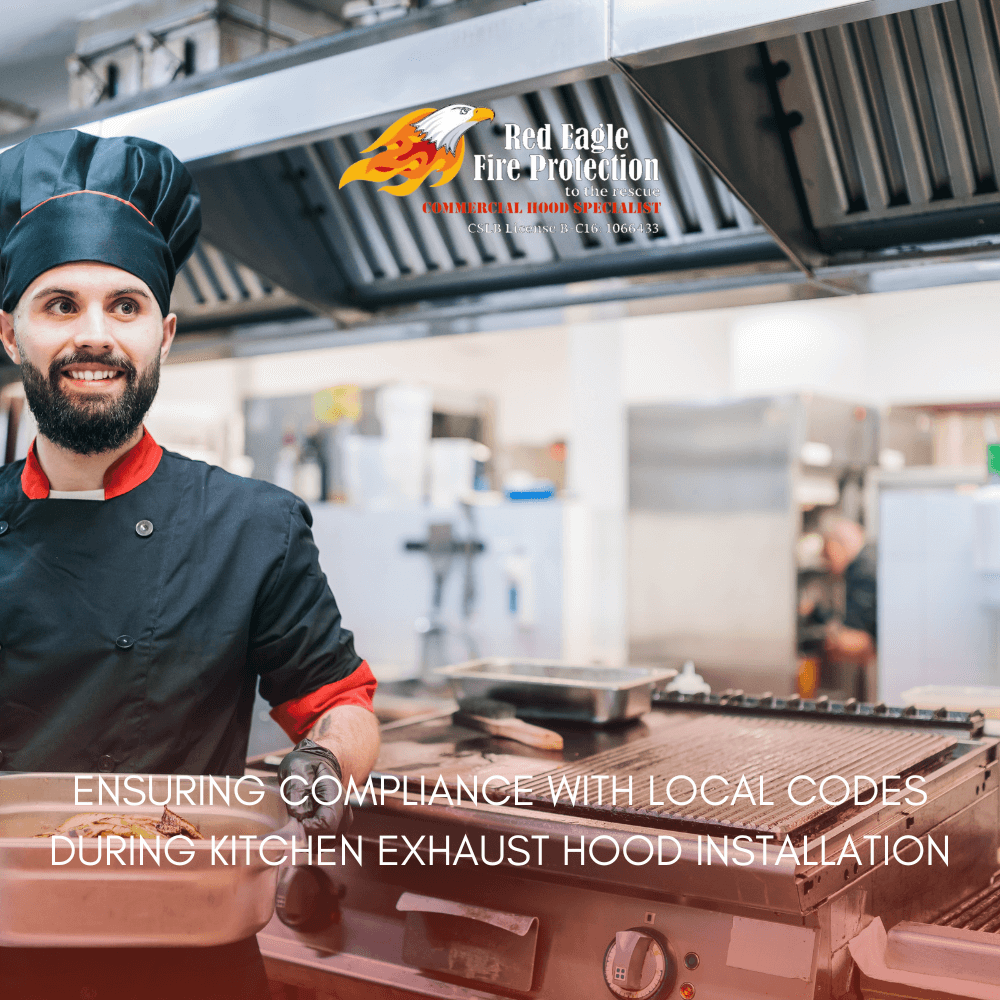When planning a kitchen exhaust hood installation, one of the most important considerations is ensuring compliance with local codes. Proper installation is crucial for safety, efficiency, and preventing legal complications. Local regulations cover everything from ventilation capacity to fire safety, making it essential for businesses to follow these standards. In this article, we’ll explore how to ensure your installation meets local codes and why it’s key to your kitchen’s success.
1. Understanding Fire Safety Regulations
One of the primary reasons for strict local codes during kitchen exhaust hood installation is fire safety. Grease-laden vapors produced in commercial kitchens are highly flammable, making proper ventilation crucial to prevent fires. Fire safety codes govern everything from hood placement to fire suppression systems, and adhering to these rules is essential to keep your kitchen safe.
Installing a Fire Suppression System
Most local codes require the integration of an automatic fire suppression system with your exhaust hood. These systems are designed to activate in case of a fire, reducing the risk of spreading flames. Ensuring that your fire suppression system is correctly installed according to local fire safety regulations is a critical part of the overall kitchen exhaust hood installation process.
2. Ventilation Capacity and Airflow Standards
Proper ventilation is key to maintaining a healthy kitchen environment and preventing overheating. Local codes often specify minimum airflow requirements to ensure efficient ventilation. These standards are based on the size and type of your cooking equipment and the amount of heat and smoke produced.
Calculating the Right Ventilation Capacity
To comply with local regulations, it’s important to calculate the correct cubic feet per minute (CFM) for your exhaust hood. This measurement is based on the size of your kitchen and the type of appliances you use. Following local ventilation standards ensures that your exhaust system effectively removes smoke, heat, and grease-laden vapors, protecting both your staff and equipment.
3. Ductwork Compliance for Optimal Airflow
The ductwork used in your kitchen exhaust hood installation must meet specific local requirements. Poorly designed duct systems can restrict airflow, lead to grease buildup, and increase the risk of fire. Local codes set standards for the size, material, and placement of ducts to ensure optimal airflow and safety.
Meeting Ductwork Standards
Local codes often require that ducts be made from fire-resistant materials and that they are properly sealed to prevent leaks. The ducts should be installed with minimal bends to promote smooth airflow. Ensuring compliance with these ductwork standards is essential for the overall performance and safety of your exhaust hood system.
4. Placement and Clearance Requirements
Another key area where local codes come into play is the placement of the exhaust hood. The hood must be installed at a certain height and distance from cooking surfaces to maximize efficiency and safety. Improper placement can reduce the effectiveness of the ventilation system and increase the risk of fire hazards.
Adhering to Local Placement Codes
Most local codes specify that the exhaust hood should be placed 24 to 30 inches above the cooking equipment. Additionally, the hood should be wide enough to cover the entire cooking area. By following these placement guidelines, you ensure that your kitchen exhaust hood installation meets safety standards and functions efficiently.
Conclusion
Ensuring compliance with local codes during kitchen exhaust hood installation is essential for maintaining a safe and functional kitchen. From meeting fire safety regulations and ventilation standards to installing compliant ductwork and proper hood placement, adhering to local requirements protects your business from potential hazards and costly fines. Investing in professional installation that meets these standards guarantees the long-term success and safety of your kitchen.
READ MORE:
Why Local Regulations Are Key to Proper Kitchen Exhaust Hood Installation

